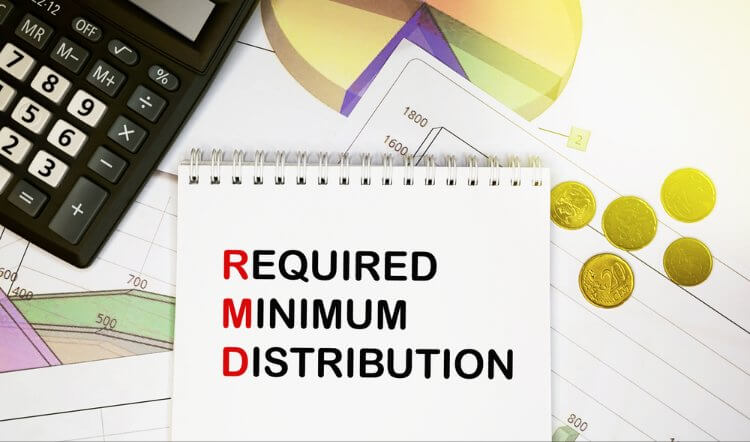When it comes to retirement savings, the rules surrounding withdrawals can be as important as the contributions you make. One crucial aspect is Required Minimum Distributions (RMDs)—mandatory withdrawals that begin when you reach a certain age, ensuring the government eventually collects taxes on pretax retirement savings. This guide will explain RMD rules, why they exist, and how to plan effectively for them.
- RMDs are the minimum amounts you must withdraw annually from tax-deferred retirement accounts.
- RMDs from traditional accounts are taxed as ordinary income. They are not required for Roth accounts.
- Failing to take your RMD by the deadline can result in a penalty of up to 25% of the amount not withdrawn (reduced to 10% if rectified quickly.
What Are Required Minimum Distributions?
RMDs are minimum amounts you must withdraw annually from your tax-deferred retirement accounts once you reach a specific age. These rules apply to accounts such as:
- Traditional IRAs (including Self-Directed IRAs)
- SEP IRAs
- SIMPLE IRAs
- 401(k), 403(b), and 457(b) plans
The withdrawals are subject to ordinary income tax. Failure to withdraw the required amount on time can result in significant penalties.
Why Do They Exist?
Pretax retirement accounts, like traditional IRAs and 401(k)s, offer tax-deferred growth, meaning you don’t pay taxes on contributions or earnings until funds are withdrawn. RMDs are the government’s way of ensuring that taxes are eventually paid. By requiring minimum withdrawals, the IRS prevents taxpayers from deferring taxes indefinitely.
When Do They Begin?
The age at which RMDs must begin has changed over the years:
- Before 2020: RMDs started at age 70½.
- After the SECURE Act (2020): The starting age increased to 72.
- After SECURE Act 2.0 (2023): The age was raised to 73 for individuals born between 1951 and 1959, and 75 for those born in 1960 or later.
Your first RMD must be taken by April 1 of the year following the year you reach the RMD age. For subsequent years, the deadline is December 31. For example:
- If you turn 73 in 2024, your first RMD is due by April 1, 2025, and your second RMD by December 31, 2025.
Important Note: Delaying your first RMD until April 1 means you’ll take two RMDs in the same tax year, which could push you into a higher tax bracket.
How Are Required Minimum Distributions Calculated?
RMD amounts are based on your account balance and life expectancy, as determined by IRS tables. Here’s how the process works:
- Account Balance: Use the value of your account on December 31 of the prior year.
- Life Expectancy Factor: Find your factor on the IRS Uniform Lifetime Table or Joint Life Table if your spouse is the sole beneficiary and significantly younger than you.
Basically, the formula is: RMD = Account balance / Life expectancy factor
Example Calculation
If you are 75 years old in 2024 and your IRA balance on December 31, 2023, is $500,000:
- Your life expectancy factor from the IRS table is 24.6.
- Your RMD is: $500,000/24.6, which equals $20,325
You must withdraw $20,325 in 2024 and include this amount as taxable income.
Special Rules for Different Accounts
401(k) Plans
If you’re still working at age 73 or older and do not own more than 5% of the company, you may be able to delay RMDs from your current employer’s 401(k) until you retire. However, this rule does not apply to IRAs or 401(k) plans from former employers.
Roth IRAs
Roth IRAs are exempt from RMDs during the account holder’s lifetime. This makes them an attractive option for tax-efficient retirement planning. However, Roth 401(k)s are subject to RMDs until 2024. Starting in 2024, SECURE Act 2.0 eliminates RMDs for Roth 401(k)s.
Penalties & Tax Implications
The penalty for failing to take your RMD used to be 50% of the shortfall, but SECURE Act 2.0 reduced it to 25% beginning in 2023. If the mistake is corrected promptly (within two years and you demonstrate reasonable cause), the penalty may be reduced further to 10%.
To avoid penalties, ensure you:
- Calculate your RMD accurately.
- Take the withdrawal by the deadline.
- Confirm with your financial institution that the correct amount has been distributed.
Tax Implications of RMDs
RMDs are taxed as ordinary income at your marginal tax rate. They can also affect other aspects of your finances, such as:
- Medicare Premiums: Higher taxable income can increase Medicare Part B and Part D premiums.
- Social Security: RMDs may cause a larger portion of your Social Security benefits to be taxable.
Tax Planning Strategies
- Roth Conversions: Consider converting some traditional IRA funds to a Roth IRA before RMD age to reduce future taxable income.
- Roth Contributions: If you qualify, you may take your RMD funds and contribute them to a Roth IRA up to the annual limit, and reinvest them.
- Qualified Charitable Distributions (QCDs): If you’re 70½ or older, you can donate up to $100,000 directly from your IRA to a qualified charity. The distribution counts toward your RMD and isn’t included in taxable income.
- Withdraw Strategically: If possible, spread withdrawals over multiple years to avoid spiking your taxable income.
Planning Ahead for Required Minimum Distributions
Understand Your Timeline – Stay informed about the age when your RMDs will begin based on current laws.
Consolidate Accounts – If you have multiple retirement accounts, consider consolidating them to simplify RMD calculations and distributions.
Automate RMDs – Many financial institutions offer automated RMD services to ensure compliance with deadlines.
Consult a Financial Advisor – An advisor can help you minimize taxes, coordinate RMDs with other income sources, and plan withdrawals in a tax-efficient manner.
Common Mistakes to Avoid
- Missing Deadlines: Missing the RMD deadline can result in costly penalties.
- Incorrect Calculations: Use the correct life expectancy table and include all applicable accounts.
- Ignoring Beneficiary Accounts: Inherited accounts have their own RMD rules, and failing to follow them can lead to penalties.
- Neglecting Tax Impacts: RMDs can have a ripple effect on your taxes, Medicare premiums, and Social Security benefits.
Conclusion
RMDs are a critical part of managing your retirement accounts. By understanding the rules, calculating withdrawals correctly, and implementing tax-efficient strategies, you can maximize your retirement savings while staying compliant with IRS regulations. Proactive planning can help you avoid penalties and make the most of your hard-earned savings.
If you’re nearing RMD age, consult with a financial advisor to develop a personalized strategy that aligns with your retirement goals. By staying informed and proactive, you can turn RMDs from a compliance requirement into an opportunity for smart retirement income planning.



